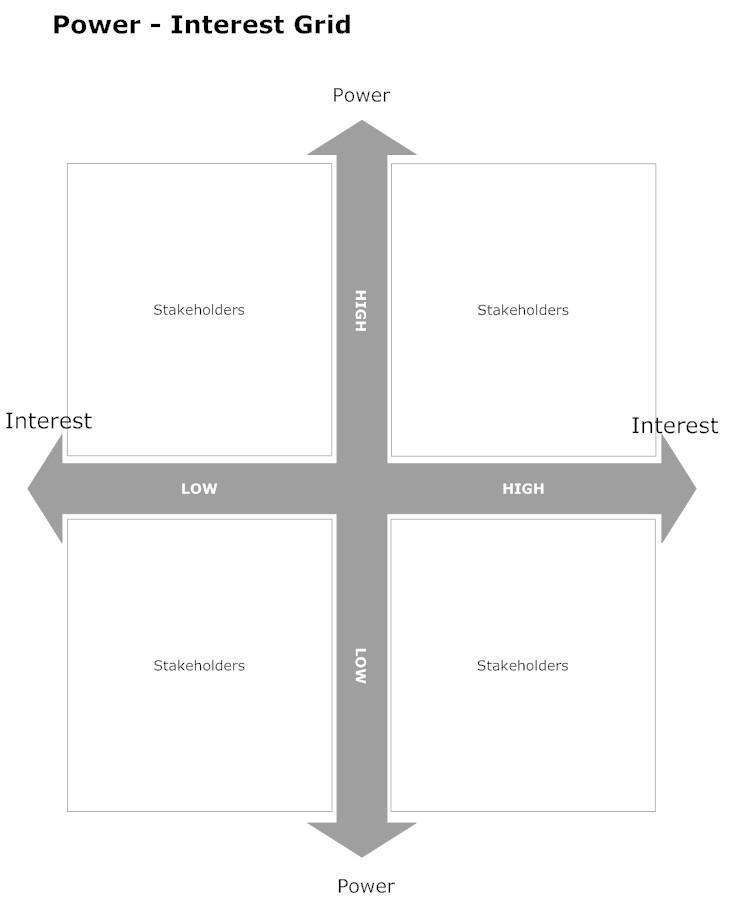Project management from above
A stakeholder power and interest management chart is a key tool to ensure all identified stakeholders are communicated with appropriately. Stakeholders tend to have opinions that may be sought earlier in the project cycle than later. Their knowledgeable input early in the project life can improve the quality of the project and give them a sense of ownership to ensure the project actually happens successfully. In gaining support from the more powerful stakeholders, we can gain access to more resources: financial, time-based and people-based resources.
When we involve the stakeholders on a regular basis, even if is simply to report on progress, we ensure they understand what we are doing and are kept abreast of the project status and benefits. If and when we need their active support, they are already ‘on side’. We can predict what stakeholders’ reactions to our project are likely to be, and ensure we are actively marketing the project in a way that will win their support.
Those we identify as having high power and low interest will need nurturing and attention.
However, those who we identify as high power and high interest will need to be marketed to early and regularly in a way that allows them to continue to see the advantages of the project.
To do this, we ensure that we develop a good understanding of the most important stakeholders so we can predict how they may respond. This allows us to work out how to win their support.
To get an easy-to-use visual report on stakeholders and their impact on the project, colour code the power interest grid above. Potential project blockers or critics can be coded in red; project supporters can be coded green; those perceived to be neutral can be coded orange.
When unsure about the consequences, talk to the stakeholders and ask them! Most people are open with opinions and this is a first step in building a successful relationship with them.
There are probably some readers right now saying, “that’s all very well, and if we sit in our helicopters, the project is riddled with mistakes”. I agree totally. A key element is balance, and many of us as project managers already have the detail covered and with backgrounds such as engineering, construction and accounting we are trained with an eye for detail. Our natural bent is to be concerned with Gantt charts, budgets, costs and overruns. These are critical to the project’s delivery. However, balancing with a helicopter view ensures the project’s success.
Keeping the helicopter view while handling a cost blowout can be difficult, but it is critical to ensuring that a cost blowout in one area does not lead to sloppy or inferior decisions in another. The project endpoint and purpose still need to be met and fulfilled.
Timing overruns can be stressful: depending on your personality type, stress can lead to too much focus on detail or disaster scenarios. Keeping an eye on the overall project gives back control. Where will the project plan allow time compression down the track without impacting on the delivery deadlines or the quality of deliverables? Where is there space in the plan to bring in extra resources to make up the timing lapse? These are helicopter, not microscope, questions.
The key to successful project delivery is a balance of looking at the project from the helicopter and through the microscope. Emphasis on one or the other can lead to sloppy delivery. Good project managers know how to balance, and walk a tightrope, between the two.


